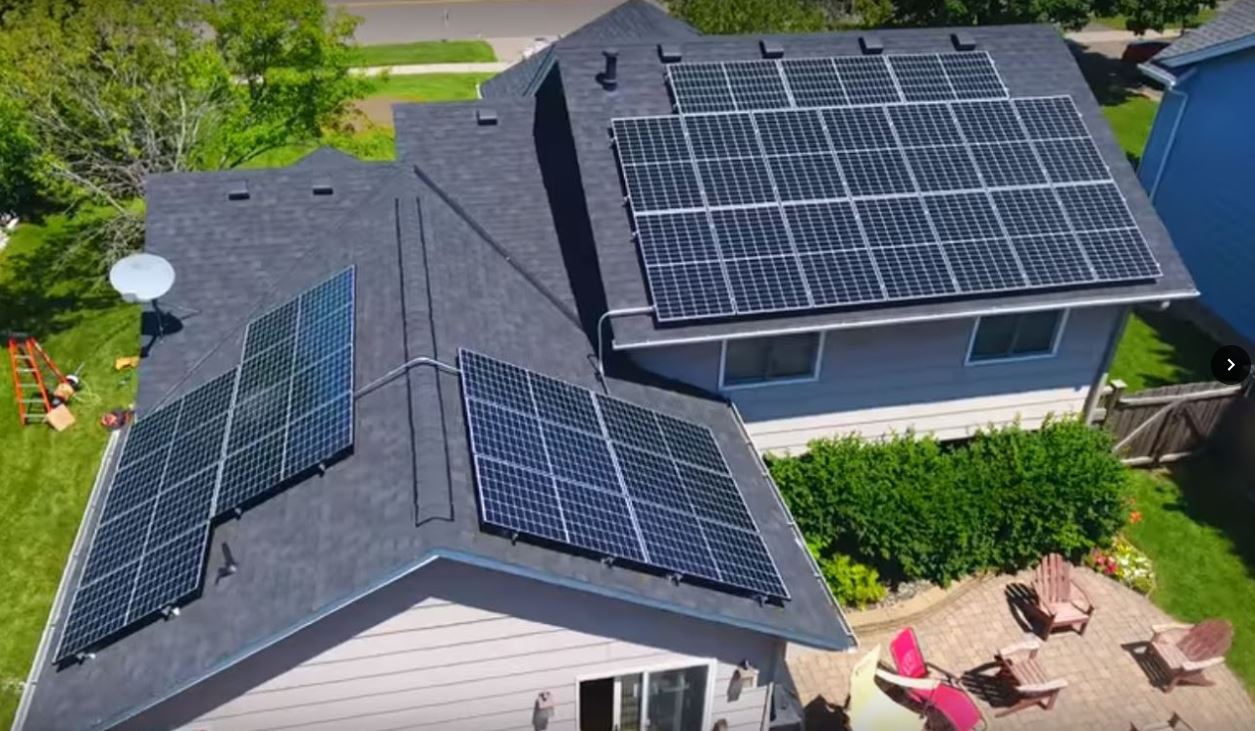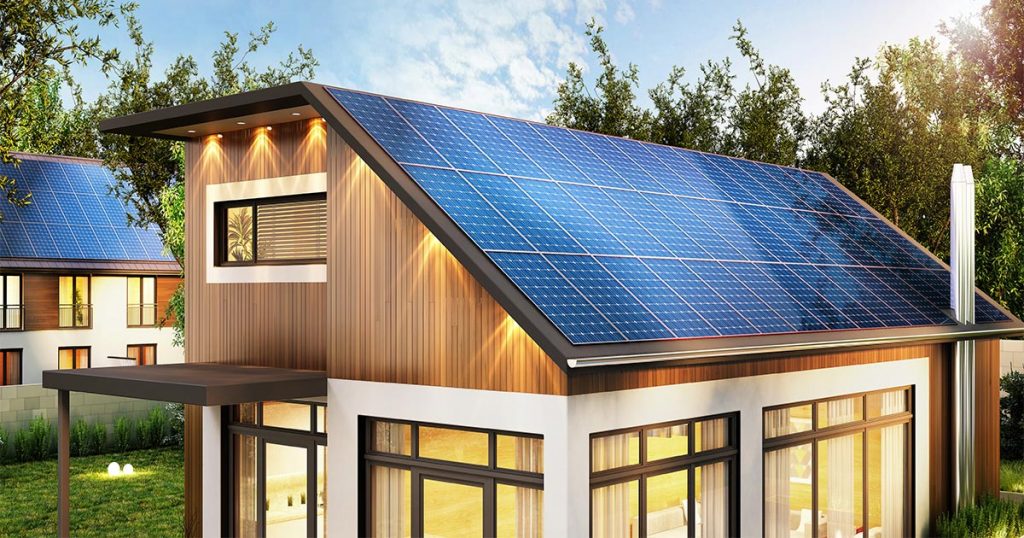Solar System for House Purpose| How Many Solar Panels Are Needed to Run a House?
How do solar systems work and how do they produce energy for your home?
A solar system is a group of objects that work together to absorb and store sunlight, which then produces energy. Solar systems are most often used for heating but can also be used to power many electronic devices. The sun’s rays are absorbed by the solar cells and converted into electrical energy which is then stored in batteries or used to heat water.
Solar panels are made from semiconductor materials that absorb light, which is converted into electricity. Solar cells can be connected in modules or panels to produce more energy. The amount of energy produced depends on the number of solar cells and their size and connection points.
Solar panels for a home can be grid-connected or stand-alone. They have to be connected to an existing electric distribution system, or they’re not practical. Stand-alone systems are not connected to the power grid, and they’re used in remote locations.
Solar panels can be installed on rooftops or mounted on poles. The size of a solar panel system depends on the amount of energy needed. The average home uses about 1,000 kWh per month. This can be generated by a 10-kilowatt solar panel system.
How many solar panels are needed to run a house?
The amount of solar panels needed to run a house depends on the size of your roof and how much electricity you use. A typical American home requires at least 10 KW, which can support the needs of a family of four.
The average home in the U.S needs between 20 and 24 solar panels to cover its electric bills, and the cost of solar panels has dropped by 50% in the last five years. The average price for a complete set of solar panels is $20,498.

What are the factors to consider when selecting a solar system for house purposes?
There are many factors to consider before selecting a solar system for house purposes. You should decide what your specific needs and goals are, then choose the size of the solar panels that will be required to provide the amount of energy your household needs.
The amount of sunlight your home receives
One of the most important factors to consider when installing solar panels is how much sunlight your home receives. In general, solar panels should face south and have clear unobstructed access to the sun. The amount of sunlight your home receives will depend on a number of factors, including:
- The time of year
- The angle at which the sun strikes your roof or panels
- Your latitude; closer to the equator you are, the more sunlight you’ll receive all year long.
It’s important to know how much energy your solar panels will generate, which is a function of the amount of sunlight that strikes them.
The type of solar panels
There are three different types of solar panels: monocrystalline solar panels, polycrystalline solar panels, and thin-film solar panels.
Monocrystalline solar panels are more expensive, but they’re also more efficient at converting sunlight into energy. Polycrystalline solar panels are less efficient, but they’re also cheaper. Thin-film solar panels aren’t as efficient either and they’re the least expensive of all.
The size of the solar system
When considering a solar system for your home, you need to think about the size of the installation. A small system might be adequate for a single-family dwelling, while a larger one would be necessary for a multi-family building or business. Keep in mind that it can take 7-10 years for a solar installation to break even.
The incentives and tax credits available
There are many incentives and tax credits available for those who decide to install solar systems. The federal solar tax credit is very generous, but drops in 2023. You need to go solar before 2023 for the most impressive savings.
Solar incentives are offered on the federal, state, and local levels. Federal tax credits offer a 26% credit on installing solar systems through the solar investment tax credit (ITC).
What are the different types of solar systems available for your home?
Grid-tied system
Grid-tied systems are a popular way for homeowners to generate power and sell the excess back to the utility company. These types of systems are generally cheaper than other options, but they rely on the electric grid. If there is an outage, your home will not have power.
Off-grid system
An off-grid solar system is a solar energy system that does not rely on the local utility grid to provide power. This means that it can operate independently of the grid, providing power 24 hours a day. An off-grid solar system usually consists of a large battery bank, which stores energy collected from the solar panels. The battery bank will allow you to use electricity even during a power outage.
Off-grid systems are more expensive than on-gird systems, even though they don’t need an electrical connection in order for them to function.
Grid-tied with battery backup/ Hybrid system
A hybrid system of solar panels can be used to provide electricity for your home. In this system, solar panels are installed on the roof of a house and they charge batteries that store electricity during the day. At night or when there is no sunlight, electricity from the batteries can be used to power appliances. The cost of a solar system depends on its size and what it is made up of.
How do you install a solar panel system for your home?
To install a solar panel system for your home, you must first determine the size of your roof. Next, check to see if there is enough sunlight and space on that part of your roof to install a solar panel. Then, make your measurements so that the panels will be installed where they are most effective at collecting sunlight and producing energy. Finally, you need to get permits from your local government and hire a professional to install the solar panels.

Is a DIY solar installation a good idea?
A DIY solar installation is a good idea if you are looking to save both money and energy. However, the process of installing a system yourself can be time-consuming and frustrating so it is recommended to hire professionals.
Installing solar panels yourself is not recommended because of the risk involved. DIY solar installations may save money on labor costs, but they come with a high risk of voiding warranties and not qualifying for incentives.
That’s why it’s best to leave the installation to the professionals. They have the experience and expertise to do the job right and ensure that everything is in compliance with local building codes and manufacturer requirements.
What are the benefits of using solar energy for your home?
Clean, renewable energy
Solar energy is a clean, renewable source of power that doesn’t produce any emissions. It’s sustainable, meaning that it can be used over and over again without damaging the environment. In addition, solar panels are low-maintenance and easy to maintain once installed.
Electricity bill savings
One of the major benefits of switching to solar energy is that you can save a lot on your electricity bill. If you are constantly running into high monthly bills, or if your house is always running on the power grid, switching to solar is a good option.
Home resale value increase
In general, homes with solar panels have a higher home resale value than those without. This is because they are more eco-friendly and people view them as an investment in the future.
A study by the National Renewable Energy Laboratory found that homes with solar panels sell for $15,000 to $20,000 more than comparable properties. And in a survey of home buyers, 72% said they would be willing to pay up to $20,000 more for a home with solar panels.
Lower taxes & access to other incentives
Tax credits vary from state to state. The government offers incentives for installing solar panels as an alternative to other sources of power, such as coal or natural gas. The federal tax credit for solar installations is 26%, with a total expiration date of 2024. Depending on the state, additional incentives may be available. The federal tax credit is not refundable. In some states, homeowners with solar panels can sell excess power.
What are the different warranty options available for residential solar systems?

When you’re looking to buy a solar system for your home, it’s important to understand the different warranty options available. A standard warranty usually covers equipment defects and workmanship for 10 or 12 years. However, there are other warranties available that can provide greater protection for your investment.
A premium warranty option is also available which offers coverage for the entire system, including inverters and wiring. This type of warranty can be especially useful if you live in an area with severe weather conditions. It can also provide protection against theft or vandalism.
Another option is a labor warranty, which covers the cost of repairs or replacement should something go wrong with the installation crew. This type of warranty is ideal if you’re not comfortable doing the repairs yourself.
Finally, there’s a service contract option that provides regular maintenance and cleaning services for your solar system. This can be helpful in ensuring that your system continues to operate at peak efficiency year after year.
How can you get solar financing for your home?
There are a few ways to finance a solar system for your home. You can use cash, take out a loan, or get a lease or power purchase agreement (PPA) from a solar company.
Solar loans are similar to other types of loans. You’ll typically need a down payment and you’ll have to make monthly payments over time. The size of the loan will be based on the cost of your system, and the loan term will usually be 10 to 20 years.
Solar leases and PPAs are also available, where a third party owns your solar system and you make monthly payments for the energy it produces.
Be sure to explore all the available solar financing options as well as incentives for renewable energy systems before making a final decision.
FAQs:
What is the use of solar panels at home?
A solar system at home is a set of panels that collect sunlight and convert it into energy. This can be used for powering electric appliances, heating water, or even as an alternative to a regular power grid.
How do you find the right solar installer?
There are a number of factors to consider when finding the right solar installer. These include whether or not they have reliable ratings and testimonials, how long their installation process is, the length of their warranties, and the ease with which they can be reached.
What are solar batteries?
Solar batteries are a type of battery that uses solar power to generate electricity, using panels or photovoltaics integrated into the design. These batteries can be used in applications such as remote locations and off-grid communities.
How much do solar panels cost for homes?
Solar panels are typically installed and serviced by a licensed solar company. The cost of installing them can vary depending on the size of your home, how many windows you have, and the size of the solar panels.
The average cost of a solar panel installation in 2022 ranges from $17,538 to $23,458 after taking into account the federal solar tax credit, with an average solar installation costing about $20,498.
